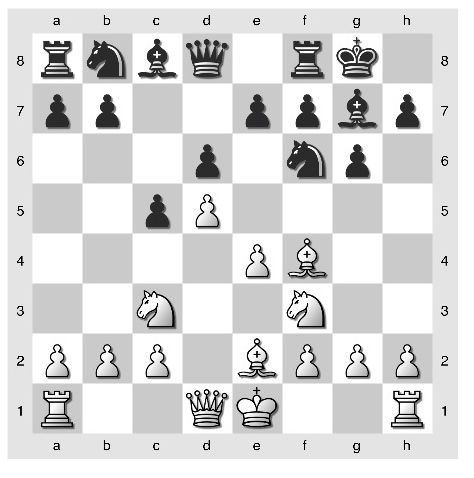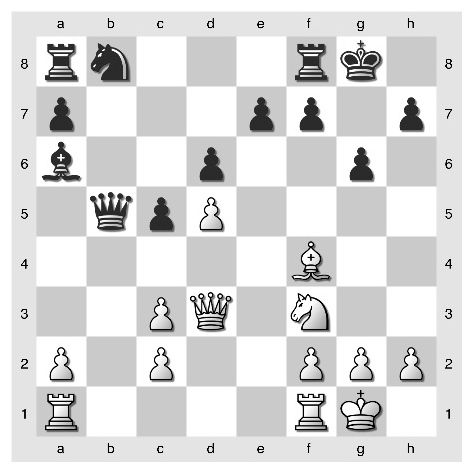The last day of the CalChess State Championship was kind of strange for me (I’ll get to that below), but it went about as expected for Sam Shankland. The tournament’s only Grandmaster surged at the finish, winning his last two games to go 5-1 and win the state championship for at least the third time. There was a four-way tie for second at 4-2 between Vladimir Mezentsev, Emory Tate, Joel Banawa, and Michael Pearson. (It was nice to see Michael again, by the way. He has been absent from Bay Area tournaments for a few years.)
Here’s a quick look at how Sam did it. In the last round he had Black against Sevan Buscara, the “mystery Frenchman.” Shankland went into the game with a 4-1 record, tying him for first with Mezentsev. Because Shankland and Mezentsev had already played each other (and drawn), they were paired against players with 3-2 scores, Shankland against Buscara and Mezentsev against Tate.
It appeared that neither Shankland nor Buscara was really prepared for the offbeat opening. I’m not sure of the exact move order, but it went something like this: 1. d4 Nf6 2. Bf4 c5 3. d5 d6 4. Nc3 g6 5. e4 Bg7 6. Nf3 O-O 7. Be2?! …
Black to move.
According to ChessBase, this position has been reached 30 times. But White’s last move may already be a slight misstep, because it allows Black to seize the initiative. Perhaps 7. Qd2 (which has been also been played 30 times) might be a little bit better.
7. … b5!
A move like this is important psychologically, in addition to its obvious strength on the board. Black is the first player to bop his opponent on the nose, and that kind of sets the tone for the rest of the battle. It has to be depressing for White to realize that he has let Black seize the initiative so early.
Sam thought that White should take on b5 with the knight. Either way, White has some problems to solve. Even declining the pawn with 8. Nd2 b4 9. Na4 Bd7 gets White in trouble.
8. Bxb5 Nxe4 9. Nxe4 Qa5+ 10. Nc3 Nxc3 11. bc Qxb5
All of White’s pawns are weak and on white squares (where his bishop can’t defend them). The computer says White can hold, but I’ll side with Sam and say that I think it’s doubtful.
12. Qd3 Ba6
According to ChessBase this position has been reached once before: Petar Trifunovic — Lothar Schmid, 1954 (!). However, I’m certain that neither Shankland nor Buscara was aware of their predecessors; I think that they have been on their own at least since move 7.
13. O-O!? …
Black to move.
Shankland thought that 13. O-O was the best try for White. It does set a little trap; there is a right way and a wrong way for Black to win a pawn. Instead, Trifunovic (who was immortalized as “the drawing master” in game 33 of Fischer’s My 60 Memorable Games) chose to trade queens with 13. Qxb5 Bxb5 14. Nd2. The computer also prefers this line. I guess it has one benefit that it doesn’t lose a pawn immediately. Computers can often hold even-material positions like this with grim defense, because they never get impatient or discouraged. However, even “the drawing master” could not defend it successfully against Schmid.
It’s understandable that Buscara wanted to play something a bit more active.
13. … Qa4!
And not the tempting 13. … Qxd3?, which lets White out of trouble after 14. cd Bxd3 15. Re1! Black cannot defend the e7 pawn, because if 15. … Re8 16. Bxd6! That’s not the end of the story because Black can play 15. … Bc4, but Sam said he worked it all out and White holds. (The computer agrees.)
After 13. … Qa4 it looks as if the skewer wins an exchange, but actually it doesn’t. White played 14. c4 Bxc4 15. Qe4 and the pin on the bishop prevents it from taking the rook. However, Sam said he just had to play a few accurate defensive moves and then he was a pawn up with an easy win. Unfortunately this is where we stopped going over the game, so I don’t know what his next move was. According to the computer, 15. … Nd7 is best.
So that’s how it’s done, folks. 7. … b5! Nice move!
As for me, after my bye in round 5, I played Eric Schiller in the last round. You know the old saying, “It’s not the size of the dog in the fight, it’s the size of the fight in the dog”? Well, this old dog (i.e., me) had no fight in him. I got what I thought was an excellent position after move 14, but then Schiller played an unexpected pawn sacrifice. Maybe it was sound, maybe it wasn’t, but instead of making Schiller prove it, I caved in. I declined the pawn and simplified into a barren endgame. Schiller offered a draw four moves later, and I accepted because there was very little chance of winning … and because I’ve lost badly to Schiller in the past and didn’t want to screw up … and because I wanted the four measly rating points … and just because my heart wasn’t in it.
That British Chess Magazine from 1901 that I was looking at last week had an interesting annotation at the end of one of the games. Instead of “Draw agreed,” or just “Draw,” as a modern-day annotator would write, the turn-of-the-century annotator wrote, “Game abandoned as a draw.” That’s the way I felt about this one. I felt as if I had abandoned a promising game, like a parent abandoning an unwanted child.
So I ended the tournament at 3-3, my second straight 50-percent finish. (I also went 3-3 at Reno.) But aside from the disappointing finish, I had a good time at the tournament and enjoyed talking with everybody there.
Addendum: I’m feeling a little bit better about my last-round cave-in this morning, but still unhappy that I let non-chess factors affect my decision over the chess board. I also want to mention that my fellow Santa Cruzan, Cailen Melville (with whom I carpooled on Sunday) had an outstanding tournament. He went 5-1 in the B section, tying for first place and winning $480. Maybe he produced some interesting games that I can show later in this blog. It seemed as if he got better as the tournament went on. He won his first two games with swindles after being in bad to lost positions, but in the later rounds it seemed as if he was just getting good positions and winning them.




